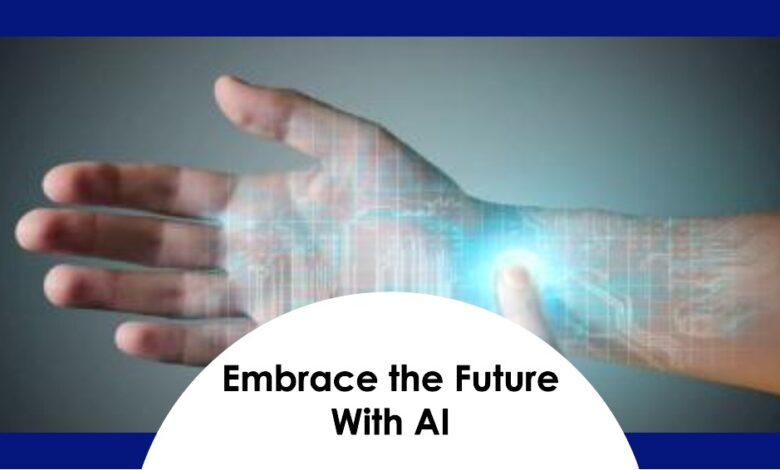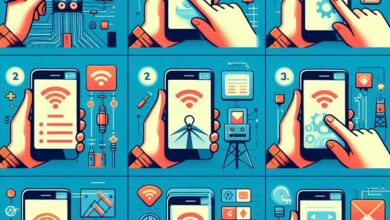ChatGPT, or: How I Learned to Stop Worrying and Love AI

I learned to stop worrying and love AI after witnessing its transformative impact on various industries and recognizing its potential to enhance our lives.
In the vast universe of technology, there’s a new star that’s been catching everyone’s eye. Its name? ChatGPT. Now, you might be wondering, “What’s this all about?” Well, let me take you on a journey.
ChatGPT is a kind of artificial intelligence, or AI for short. But it’s not just any AI. It’s an AI that can chat with you, understand you, and even write essays or poems for you. It’s like having a super-smart friend who’s always there to help you out.
But when I first heard about AI and ChatGPT, I was a bit worried. You see, AI is a powerful tool, and like any powerful tool, it can be a bit scary. We’ve all heard the stories and seen the movies about AI going rogue. So, naturally, I was a bit apprehensive.
But then, I decided to learn more about it. And guess what? The more I learned, the less I worried. I realized that AI isn’t some scary monster. It’s just a tool, a really cool and useful tool. And ChatGPT? It’s one of the coolest tools out there.
So, join me as I share my journey from worry to wonder, and how I learned to stop worrying and love AI. Let’s dive in!
Understanding AI and ChatGPT
Alright, let’s move on to the next part of our journey.
Artificial Intelligence, or AI, is a field of computer science that’s all about creating machines that can think and learn like us humans. It’s like teaching a computer to play chess, recognize a song, or even diagnose a disease. Sounds pretty cool, right?
Now, let’s talk about ChatGPT. Imagine having a friend who’s super smart, always available, and can help you with just about anything. That’s ChatGPT for you. It’s a type of AI that’s designed to understand and generate human-like text based on the input it receives. So, whether you need help with your homework, want to know the latest news, or just feel like having a chat, ChatGPT is there for you.
But, like I said earlier, the idea of AI can be a bit scary at first. We often fear what we don’t understand, and AI is no exception. There are a lot of misconceptions and fears about AI taking over jobs, becoming too powerful, or even turning against us. And I’ll admit, I had some of these fears too when I first heard about AI and ChatGPT.
But then, I decided to face my fears and learn more about AI. And you know what they say, knowledge is power. The more I learned about AI, the less I feared it. I realized that AI is not some uncontrollable force, but a tool created by humans, for humans. It’s a tool that can help us solve complex problems, make our lives easier, and even open up new possibilities we never imagined.
In the next part, we’ll delve deeper into my initial worries about AI and how learning more about it helped me overcome them. Stay tuned!
Initial worries I had about AI and ChatGPT
Let’s talk about those initial worries I had about AI and ChatGPT.
When I first heard about AI, I was filled with a mix of excitement and apprehension. The idea of machines being able to think and learn like us humans was fascinating, but it also raised a lot of questions. Will AI take over our jobs? Can it become too powerful? What if it goes rogue?
These fears were further amplified when I came across ChatGPT. Here was an AI that could chat like a human, write essays, and even generate creative content. It was impressive, but also a bit unsettling. Could such a powerful tool be controlled? What if it starts generating harmful content?
But then, I realized something. These fears were not about AI or ChatGPT per se, but about the unknown. It was the lack of understanding about AI that was causing these fears. And the only way to overcome this fear was to learn more about AI.
So, I started reading up on AI, how it works, and its potential applications. I learned about the rigorous processes involved in training an AI, the checks and balances in place to ensure its safe use, and the numerous ways it can benefit us.
The more I learned, the more my fears subsided. I realized that AI is not some uncontrollable force, but a tool created by humans, for humans. It’s a tool that can help us solve complex problems, make our lives easier, and even open up new possibilities we never imagined.
My initial fears and how I overcame
Now that we’ve talked about my initial fears and how I overcame them, let’s move on to my personal experiences with ChatGPT.
When I first started using ChatGPT, I was amazed at how human-like it was. It could understand my queries, provide relevant responses, and even engage in a meaningful conversation. It was like chatting with a friend, except this friend was available 24/7 and had a vast amount of information at its disposal.
One of the things that impressed me the most about ChatGPT was its ability to generate creative content. Whether it was writing an essay, creating a poem, or even generating a short story, ChatGPT was up to the task. It was fascinating to see how an AI could be so creative.
But what truly won me over was how helpful ChatGPT was. Whether I needed help with my homework, wanted to know the latest news, or just felt like having a chat, ChatGPT was there for me. It was like having a super-smart friend who was always there to help.
Using ChatGPT also made me realize the potential benefits of AI. It showed me how AI can be used to make our lives easier, solve complex problems, and even open up new possibilities. It made me excited about the future of AI.
Benefits of AI and how it can revolutionize various fields
Now that we’ve explored my personal experiences with ChatGPT, let’s delve into the potential benefits of AI and how it can revolutionize various fields.
AI, with its ability to analyze vast amounts of data and learn from it, has the potential to bring about significant changes in various fields. From healthcare to education, from business to entertainment, AI can help us solve complex problems, make informed decisions, and even create new opportunities.
In healthcare, AI can help doctors diagnose diseases, predict patient outcomes, and even develop new treatments. It can analyze patient data, identify patterns, and provide insights that can help improve patient care.
In education, AI can provide personalized learning experiences, identify gaps in a student’s understanding, and even suggest resources to help them learn better. It can make learning more engaging and effective.
In business, AI can help companies analyze market trends, predict customer behavior, and make strategic decisions. It can help businesses become more efficient and competitive.
And let’s not forget entertainment. AI can create personalized recommendations, generate creative content, and even help in the creation of movies and music.
ChatGPT, with its ability to understand and generate human-like text, can be a valuable tool in all these fields. It can help doctors analyze medical reports, assist students with their homework, provide businesses with market insights, and even write scripts for movies.
But while AI has immense potential, it’s also important to consider ethical and safety aspects. AI should be used responsibly, with respect for privacy and human rights. It’s crucial to have checks and balances in place to ensure the safe and ethical use of AI.
Ethical and safety aspects
As we venture further into the world of AI, it’s crucial to address the ethical and safety aspects. AI, as powerful and beneficial as it can be, should always be used responsibly.
Ethics in AI is a vast field that covers a range of issues, including privacy, fairness, and transparency. It’s about ensuring that AI systems respect our values and rights. For instance, an AI system should not invade our privacy by accessing personal data without consent. It should not be biased and should treat all users fairly.
Safety is another critical aspect. AI systems should be designed and used in a way that does not harm humans, either physically or psychologically. For instance, an AI chatbot like ChatGPT should not generate harmful or offensive content.
Developers of AI systems, including ChatGPT, take these ethical and safety considerations very seriously. They implement rigorous processes and checks to ensure that the AI behaves as intended and does not cause harm. They also strive for transparency, providing clear information about how the AI works and how it uses data.
Conclusion
My journey from fear to acceptance of AI has been enlightening. I’ve learned that AI, including ChatGPT, is not something to fear but a tool that can bring immense benefits. It’s a tool that, when used responsibly and ethically, can help us solve complex problems, make our lives easier, and open up new possibilities. As we continue to explore and innovate, I look forward to seeing what the future holds for AI. Stay tuned for more exciting developments in this fascinating field!





